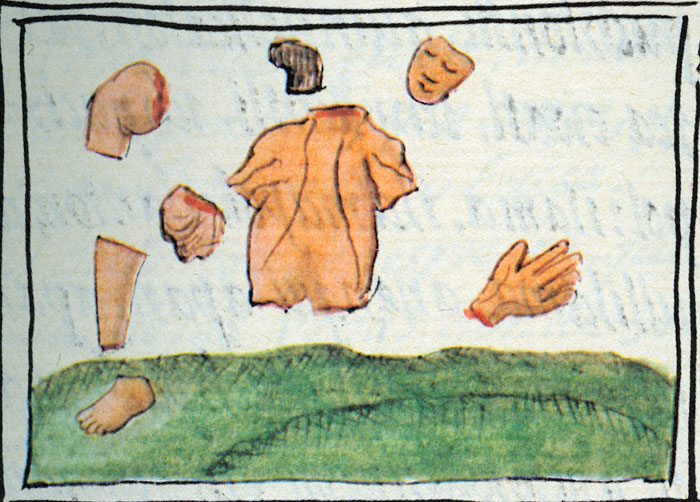 When the Franciscan friar Bernardino de Sahagún set out to record the world of the Aztecs in 1540, he complained about “hidden meanings that are unrecognizable.” In Book X of his 12 volume Florentine Codex, written in native Nahua with sections translated to Spanish, he describes “all parts of the body, the internal and the external organs in much detail.” Sahagún did not translate (censor and rewrite) the Nahua body parts to Spanish and so his list retains aspects of native thought that had little relevance to Renaissance Europe but surprising insights for our own efforts and activities. At the end of Sahugún’s taxonomy, there are some decidedly native categories contributed, no doubt, by Aztec subjects: parts of the body that glisten, parts of the body that occur in strips, parts of the body that are bundled or sewn, parts of the body that are like corn. We can imagine a concept of the human body that was not a closed system (as we generally construct it) but an open, mutable set of parts linked to other elements of nature. We are reminded that the categories we construct to analyze the archive are bound to our belief and cultural systems. We must not only pose questions, but constantly question the categories, the divisions, the very forms we use to ask our questions
When the Franciscan friar Bernardino de Sahagún set out to record the world of the Aztecs in 1540, he complained about “hidden meanings that are unrecognizable.” In Book X of his 12 volume Florentine Codex, written in native Nahua with sections translated to Spanish, he describes “all parts of the body, the internal and the external organs in much detail.” Sahagún did not translate (censor and rewrite) the Nahua body parts to Spanish and so his list retains aspects of native thought that had little relevance to Renaissance Europe but surprising insights for our own efforts and activities. At the end of Sahugún’s taxonomy, there are some decidedly native categories contributed, no doubt, by Aztec subjects: parts of the body that glisten, parts of the body that occur in strips, parts of the body that are bundled or sewn, parts of the body that are like corn. We can imagine a concept of the human body that was not a closed system (as we generally construct it) but an open, mutable set of parts linked to other elements of nature. We are reminded that the categories we construct to analyze the archive are bound to our belief and cultural systems. We must not only pose questions, but constantly question the categories, the divisions, the very forms we use to ask our questions
I genuinely enjoy reading on this website, it holds good content. “Never fight an inanimate object.” by P. J. O’Rourke.